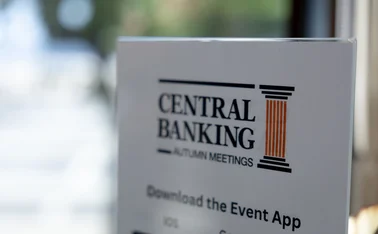
Covid-19 boosts gold’s appeal among reserve managers
Central banks say gold helps replace negative-yielding sovereign bonds

The Covid-19 crisis is likely to enhance gold’s attractiveness as a reserve asset because it helps central banks tame the impact of negative sovereign bond yields, according to a new report.
Invesco’s 2020 Sovereign Asset Management Study also highlights reserve managers’ willingness to maintain their equity investments in spite of the market turmoil unleashed by the pandemic in March.
However, the crisis has cut central banks’ appetite for new assets and more diverse currency allocations, and 29% of them now plan to boost their US dollar-denominated assets.
In total, 56 central banks took part in the study, as well as 83 sovereign wealth funds. As of March 2020, these institutions managed $19 trillion in assets. Invesco carried out the study during the first quarter of the year, so some of the impact of the crisis was not fully apparent.
Nonetheless, it already showed reserve managers were increasingly concerned about negative sovereign bond yields, and thought gold was a good way to tame this trend, which has been reinforced by unconventional monetary policy worldwide. The average allocation to gold has increased to 4.8% of central banks’ reserve portfolios from 3.5% in 2016.
Overall, 48% of participating central banks said gold’s main attraction was that it offered a way of replacing negative-yielding debt. Additionally, 44% said it reduces currency concentration in the portfolio, and 44% pointed out it has a lower correlation to other financial assets.
“Central banks are using gold, gold securities, ETFs, gold swap futures … as a way of replacing low or negative-yielding government debt,” says Rod Ringrow, Invesco’s head of official institutions.
The gold market has become increasingly sophisticated over the past decade. “Traditionally, gold has been the store of value against deflation, and typically central banks have bought physical gold. The market has developed rapidly over the last few years. And the ability to buy gold in different forms is now increasingly attractive,” adds Ringrow.
Specifically, ETFs are perceived as one important factor in this trend. “There is generally good liquidity and there is an anonymity factor there, which I think is interesting for central banks in particular, because it removes a high degree of potential political debate about what they’re investing in, what they divest from, particularly when it comes to things like physical gold,” says Ringrow.
Gold has also offered central banks a way to diversify their portfolios away from the dollar. This has been especially the case in countries facing financial sanctions from the US, such as Russia and Turkey. In fact, in the first quarter of 2020, only six central banks bought 1 tonne or more, according to the World Gold Council.
In Invesco’s study, 18% of participating central banks said they planned to increase their gold allocations over the next year, 4% intend to reduce it, and 78% leave it unchanged.
Equities: here to stay
The study points out reserve managers have consolidated a higher degree of risk tolerance. This is particularly clear among those who adopted equities as a source of higher returns during the post-crisis low-yield environment.
Some 39% of participating central banks see equities becoming a core asset class, which is especially the case in Europe. Additionally, almost 50% see equities as an opportunity to increase reserves through higher investment returns over time.
Over the last five years, 30% of participants reported having added equities to their portfolios, the same percentage of institutions that had added corporate debt, while 55% of respondents said they added mortgage-backed securities to their asset allocations.
“During the financial crisis, there was a trend to de-risk the portfolios heavily. This time, we’ve not seen them de-risking the portfolios to date,” points out Ringrow. “Reserve managers are now recognising that the extra risk taken by investing a small proportion of the portfolio in equities is acceptable as part of a broadly diversified portfolio. Actually, now I think they are looking for the return that they’re getting from having slightly higher risk allocation.”
In spite of the challenging context created by Covid-19, 44% of central banks said they will maintain their current equity allocations, and 36% intend to increase them. In contrast, 20% plan to trim the exposure.
Going forward, equities could even become more popular. Overall, 61% of participating reserve managers, 80% of developed market economies and 55% of emerging market central banks believe that an increasing number of central banks will consider equities an important part of the reserves portfolio.
“There has been a bit of a split between developed markets central banks and the emerging markets central banks,” says Ringrow. “While 85% of central banks in developed markets confirmed to us that they believe equities are increasingly important to grow the reserves, in emerging markets they were much more cautious – less than 32% shared that view.”
Currency diversification pause
Between 2016 and 2019, US dollar foreign reserve currency allocations declined from 65.4% to 60.9%. But Covid-19 is likely to halt this trend.
“As the scope and impact of the Covid-19 crisis became clearer, many central bankers initiated a flight back to the perceived safety of the US dollar,” says the study. “One-third of bankers intend to increase dollar reserves, reversing the longer-term trend.”
Some 29% of participants said they expected an increase in US allocations, and 4% anticipated a significant increase, while 50% foresee no change.
Although reserve managers still appreciate the strategic advantages in diversifying their currency allocations, in times of crisis the US dollar remains the most liquid option.
Only users who have a paid subscription or are part of a corporate subscription are able to print or copy content.
To access these options, along with all other subscription benefits, please contact info@centralbanking.com or view our subscription options here: subscriptions.centralbanking.com/subscribe
You are currently unable to print this content. Please contact info@centralbanking.com to find out more.
You are currently unable to copy this content. Please contact info@centralbanking.com to find out more.
Copyright Infopro Digital Limited. All rights reserved.
As outlined in our terms and conditions, https://www.infopro-digital.com/terms-and-conditions/subscriptions/ (point 2.4), printing is limited to a single copy.
If you would like to purchase additional rights please email info@centralbanking.com test test test
Copyright Infopro Digital Limited. All rights reserved.
You may share this content using our article tools. As outlined in our terms and conditions, https://www.infopro-digital.com/terms-and-conditions/subscriptions/ (clause 2.4), an Authorised User may only make one copy of the materials for their own personal use. You must also comply with the restrictions in clause 2.5.
If you would like to purchase additional rights please email info@centralbanking.com test test test








